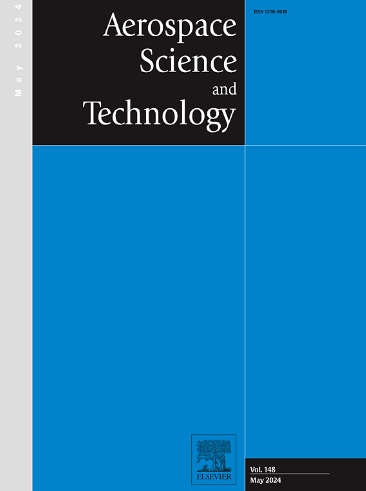Effect of cavity depth on air-breathing rotating detonation engine fueled by liquid kerosene
IF 5
1区 工程技术
Q1 ENGINEERING, AEROSPACE
引用次数: 0
Abstract
In our recent experimental investigation, the feasibility of a liquid-kerosene-fueled air-breathing/ramjet rotating detonation engine featuring a cavity-based annular combustor has been experimentally demonstrated. Achieving stable operation and organized detonation combustion within the rotating detonation combustor presents significant challenges that demand further investigation. Thus, this study aimed to deepen our understanding of the optimal geometrical configuration of a cavity-based annular combustor operating in air-breathing mode. Numerous experiments were conducted to evaluate the impact of varying cavity depths on combustion performance under a supersonic incoming flow with a total temperature of 860 K. The findings indicate that adequate cavity depth is essential for the generation of kerosene-fueled rotating detonation waves in air-breathing mode. Notably, a kerosene–air rotating detonation wave was achieved in combustors with cavity depths ranging from 10 to 30 mm while maintaining a supersonic heated air mass flow rate of approximately 1000 g/s and a minimum equivalence ratio of 0.77. However, at a cavity depth of 10 mm, both the propagation velocity and peak pressure of the rotating detonation waves were significantly lower compared to those at 20 and 30 mm, thereby suggesting that the depth of 10 mm may require optimization. Additionally, optical observations revealed that the detonation reaction zone was located further from the combustor head as cavity depth increased. This indicates that deeper cavity depths allow for longer mixing and preheating times of the combustible mixture before detonation, thereby enhancing detonation performance. This study clarifies how cavity depth influences liquid-fueled rotating detonation and provides guidelines for designing cavity-based annular combustors in air-breathing rotating detonation engines.
求助全文
约1分钟内获得全文
求助全文
来源期刊

Aerospace Science and Technology
工程技术-工程:宇航
CiteScore
10.30
自引率
28.60%
发文量
654
审稿时长
54 days
期刊介绍:
Aerospace Science and Technology publishes articles of outstanding scientific quality. Each article is reviewed by two referees. The journal welcomes papers from a wide range of countries. This journal publishes original papers, review articles and short communications related to all fields of aerospace research, fundamental and applied, potential applications of which are clearly related to:
• The design and the manufacture of aircraft, helicopters, missiles, launchers and satellites
• The control of their environment
• The study of various systems they are involved in, as supports or as targets.
Authors are invited to submit papers on new advances in the following topics to aerospace applications:
• Fluid dynamics
• Energetics and propulsion
• Materials and structures
• Flight mechanics
• Navigation, guidance and control
• Acoustics
• Optics
• Electromagnetism and radar
• Signal and image processing
• Information processing
• Data fusion
• Decision aid
• Human behaviour
• Robotics and intelligent systems
• Complex system engineering.
Etc.
 求助内容:
求助内容: 应助结果提醒方式:
应助结果提醒方式:


